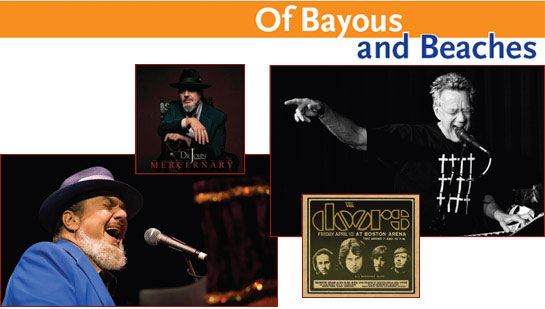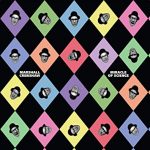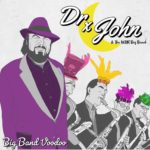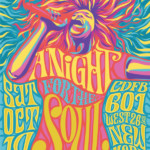
DR. JOHN
Born November 21, 1940, Mac Rebennack has played with some of the greatest artists of all time, and developed his own trademark style. Haven’t heard of him? He’s Dr. John.
Dr. John, on guitar, backed some of the great albums to come from his hometown, New Orleans, but a gunshot wound to his left ring finger necessitated a turn towards keyboards; nothing could keep him from music. After a move to Los Angeles, he became even more sought-after as a session player and lent his talents on records by Van Morrison, Sonny and Cher, Aretha Franklin, and Carly Simon, among many others.
When Gris-Gris was released in 1968, it established Dr. John’s solo career. The blend of psychedelic rock, blues, and voodoo mysticism created the signature sound which has earned him numerous awards, including three Grammys.
Dr. John continues to produce and write, record his own music and tour regularly worldwide. Since Hurricane Katrina, he has helped raise awareness of victims by performing at benefits, tributes and releasing an EP called Sippiana Hericane in 2005. Last year he put out an album of Johnny Mercer songs, Mercernary (Blue Note). Thankfully for his throngs of supporters, no matter what stage of life Dr. John’s going through, music will always surround him.
RAY MANZAREK
Keyboardist Ray Manzarek was born on February 12, 1939 to Polish immigrants on the south side of Chicago, where he grew up listening to the established boogie-woogie piano players of the 1950s like Little Richard and Fats Domino, as well as Chicago-based blues artists Muddy Waters and Howlin’ Wolf. After college he attended UCLA’s law school, where his improvisational keyboard style was influenced by the breezy, Latininfused jazz popular in Southern California.
In 1965, Manzarek met fellow Doors members at UCLA’s film school. By ’66 they’d signed with Elektra and in ’67 released their debut album, which featured “Light My Fire.” The Doors, centered on Morrison’s resonant vocals and Manzarek’s fluid improvisations, made a lasting contribution to American music. After the untimely death of Jim Morrison in 1971, the band turned out two more albums with Manzarek on vocals.
Manzarek released solo albums in ’73 and ’74 which innovatively fused rock and jazz. In the late ’70s, he co-produced X’s upcoming album. The result, Los Angeles, is one of the most important within the punk genre. Currently, Manzarek has teamed up with former Doors’ guitarist Robby Krieger and ex-Cult frontman Ian Astbury to create Riders on the Storm, playing Doors’ music.
With the Doors’ 40th anniversary, Rhino has released two landmark sets: the 34-track, 2-CD collection The Very Best of the Doors, which contains tracks not available on other U.S. compilations, and the handsome box set Live in Boston, from the first stop on their 1970 tour. Those three discs include complete recordings of both the early and late shows (virtually all of which is previously unreleased), and liner notes with recollections from the three surviving members. E
![]()
Elmore: What are you listening to right now?
Dr. John: Ain’t a whole lot other than the bands that are on the gig with us, ‘cause you can’t hear much on this bus. A lotta old stuff that touched me. Smiley Lewis songs, the Imperial’s stuff from back in the day. I’ve been lookin’ around my pad for some stuff Aaron Neville did, and I couldn’t find what I was looking for and I found some other stuff, you know what I mean?
Ray Manzarek: I listen to electronica, Chemical Brothers, D.J. Spooky, Subliminal Kid, and then obscure people like D.J. Rodriguez out of Rome. For the most part like deck stuff, electronica, manipulation of synthesizer. The wave of the future, my man, the wave of the future. I don’t listen to the bands much. I left off the bands after the Beatles.
EM: What was the first record you ever bought?
Dr. J: My father used to sell records, I used to get them free, mostly 78s back then. I used to go to the Bop Shop for people like Lightnin’ Hopkins, a lot of them gut-bucket guitar players. Tampa Red. I got them used records cheap, and you could play them before you bought it.
RM: The first 45 I went in to buy was “Sixteen Tons” by Tennessee Ernie Ford, which was also a big influence on Jim Morrison, but it had sold out, so I bought something called “Bermuda,” also a hit at the time. It was like two sisters singing, and it had a Les Paul and Mary Ford kind of sound.
EM: Where do you buy your music?
Dr. J: People give me stuff on the road. I don’t know how to work a computer machine, but I got people who can track somethin’ down. Is this magazine named after Elmore James? I had a lot of Elmore James, and I actually saw him one time on a gig, and I went out and got all his records—they’re slammin’, man.
RM: I still buy my music at record stores. I order CDs over the Internet. I love to hold the thing in my hand, and love to read the liner notes. I like the physical object.
EM: What was the first instrument you played?
Dr. J: The first instrument I ever owned was a guitar, and that’s what I started studying on. I can still play the guitar, I just don’t carry it around with me. These days, I’m lucky to get me on the gigs, much less lugging anything else.
RM: Piano, at eight. I started with piano lessons on an enormous upright piano they moved into the basement of our house. It took like six guys to bring it in. Turned wood, all baroque, Germanic, like a Volk piano. Now that is art. It had a great sound, too, because it had a big harp in the back. It was also a player piano, but there were no rolls.
EM: Who would you like to write with that you haven’t?
Dr. J: I don’t think about things that way. Somebody would pop up. I’ve written songs with Willie Dixon, Doc Pomus, Paul Gayten and Bobby Charles, a lot of different kind of writers.
RM: I’d like to write with the electronica composer, B.T., and D.J. Spooky. And I may, but I just don’t have the time to do it all.
EM: What brought you to the instrument you now play?
Dr. J: My Aunt Andre showed me how to play some boogies on the piano when I was a little kid. I used to play with one hand, then later the other hand, and it took me a while to put all that together. I wasn’t even ten. There was a guy right at the corner of Lafayette who’d play everything in the key of F-Sharp, and I never could figure out what the hell he was doing, but he could play.
RM: Mommy and Daddy. My primary instrument is anything with a keyboard, be it organ, electric keyboard, Fender Rhodes, synthesizer. My father was a mean ukulele player, and played hollowbody guitar. He had a big tenor uke, a cool thing, not that tiny little Hawaiian thing. My mother had a great voice and they had a great time playing and singing. When I learned how to play the piano, my father would play the guitar, I’d play the piano, and my mother and my two brothers would sing songs, and everyone was singing in the house, songs like “I’ve Got a Lovely Bunch of Coconuts.”
EM: What musician influenced you most?
Dr. J: On the piano, it’s like Professor Longhair, Allen Toussaint, Charles Brown. Lloyd Glenn and Mercy Dee Walton. Guitar players; T-Bone Walker, Johnny Moore, Lightnin’ Hopkins. My Daddy played that record with Big Joe Turner, Piney Brown, I wanted to be Pete Johnson playing the piano.
RM: Muddy Waters, piano players Bill Evans and Ramsey Lewis, and Igor Stravinsky, a maniac. Those are my major influences. To be able to play like Bill Evans would be the dream of my life. I’m probably one of the people you’ll ever talk to that was actually influenced by the ’50s rockers. They were piano players. Little Richard, Jerry Lee Lewis, Fats Domino, all piano players. Very big. That changed my life—I’ve never been the same since.
EM: What was the song or event that made you realize you wanted to be in music?
Dr. J: When I started taking guitar lessons, this changed my life. My first guitar teacher, Al Guma had a music school. My dad took me to Walter “Papoose” Nelson, this guy who was playing with Fats Domino Band at the time, but he ran off to Baton. I’m his guitar student, and he sent me to sub for him on a record session. I’m 13, 14 years old and all of a sudden I’m working on a record session. They wanted my teacher and they’re stuck with me. Stuff started shifting gears fast in my life.
RM: When I heard “Hoochy-koochy Man” by Muddy Waters, in the basement of my house, listening to the rhythm and blues radio station. This song came on and that was it.
EM: Who would you like in your rock and roll heaven band?
Dr. J: I’d start with a drummer, and he’s still alive and kickin’, that’s Earl Palmer. On the bass, they call him “Shirt,” Chuck Badie; on guitar I’d get Papoose; on keyboard, it would depend on what kind of gig it was. If it was blues, I’d want somebody like Charles Brown or Amos Milburn; or I’d get somebody between Little Richard and Huey Smith. A horn section, maybe Alvin “Red” Tyler on the bari [sax]. From being an A&R guy, my job was to hire the best guys for that particular project. I was trying to go Walt Disney Fantasia gig, but it don’t work too good that way.
RM: I’d like to work with that lead singer named Jim Morrison, that’s for sure. I certainly miss playing with him, and working on some new material would be fun. “Jim, do you have any new lyrics?” “Why, yes, Ray, I do.” “Well, let’s get started, bro.” That would be fabulous. I’d like to be the keyboard player with Jimi Hendrix, Jim Morrison, Keith Moon, and John Entwhistle. Those are the sidemen. Jimi and Jim sing together. Keith plays drums, and Entwhistle plays base, and I’m on keyboards. That’s the band. They’re workin’ out some new material. Delicious margaritas, handmade. Remember, it’s Heaven, no hangover.
EM: What’s your desert island CD?
Dr. J: If I was stuck on a fucking desert island, it would be my luck to have a CD and don’t have nothin’ to play the fuckin’ thing. “The Right Place at the Wrong Time” is my life’s story.
I’d go crazy if I had to listen to one thing over and over. I’d have to have one of those i-pops where I got a lot of shit happenin’. I get hohummed out. Some old Machido and some Arsenio Rodriguez, Latin shit. Some of the old, old shit like Miles Davis, Dealonez Markin. Jelly Roll Morton—I love his piano solo stuff .
Out of old stuff I can listen to like a time zone of somebody, but with the brand new stuff, I listen to one or two songs by this one person, but it ain’t like I could say, “Damn, I want to listen to all the stuff this person cut one year.” Some people I only like one song they ever did anyway.
RM: I can’t make a compilation? I’ll take Miles Davis’ Kind of Blue. Cannonball Adderly, John Coltrane, Bill Evans is on there, and Miles himself. That’s one of the seminal points in my life. Bill Evans playing with them and doing that modal thing, very influential on the Doors’ thing. The Doors were the rock and roll Modern Jazz Quartet.







[…] a Sunday evening in Tucson, and crowds of smiling faces were descending on the Fox Theatre to see Dr. John and his […]
[…] Dr. John & Ray Manzarek: Of Bayous and Beaches on http://www.elmoremagazine.com […]